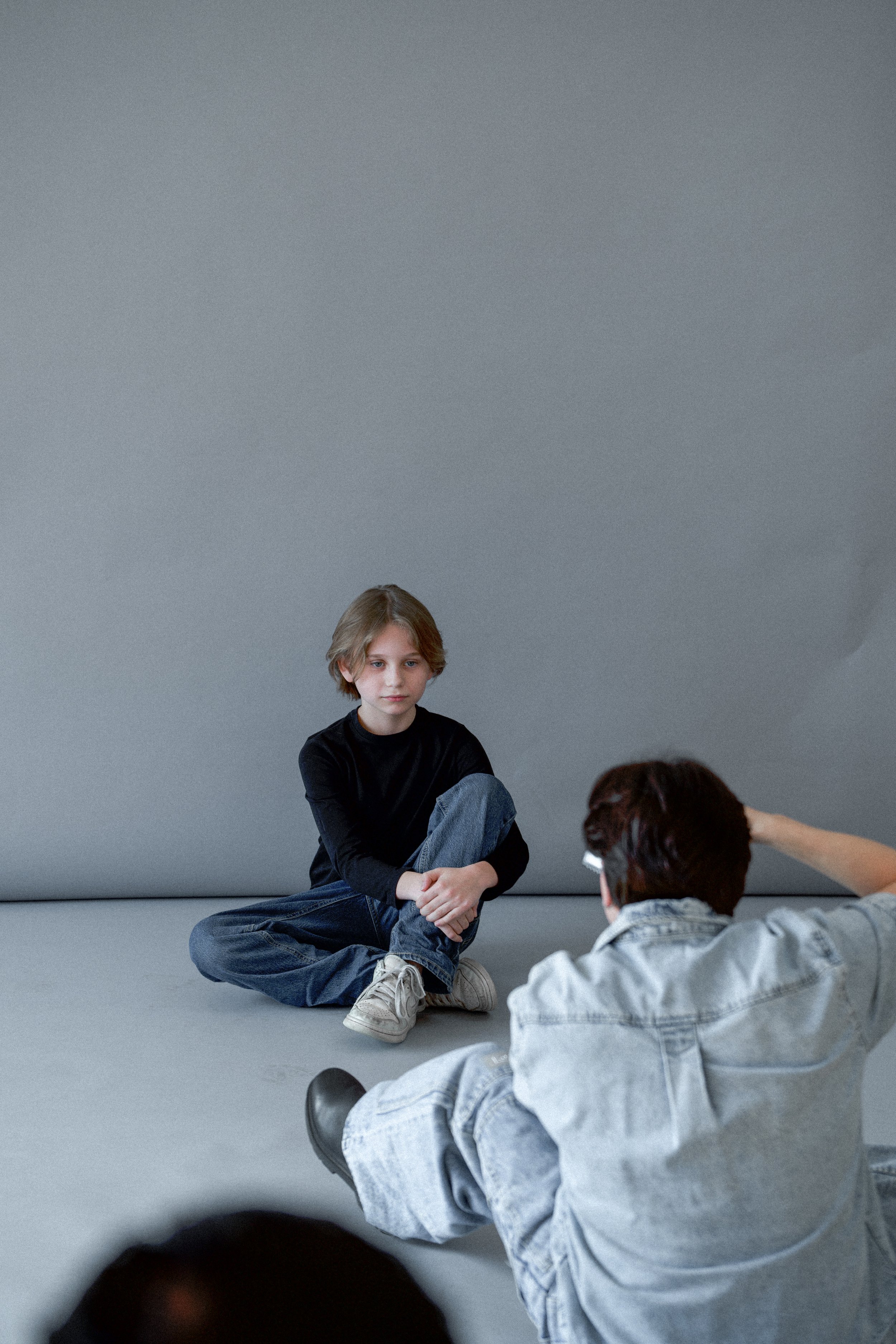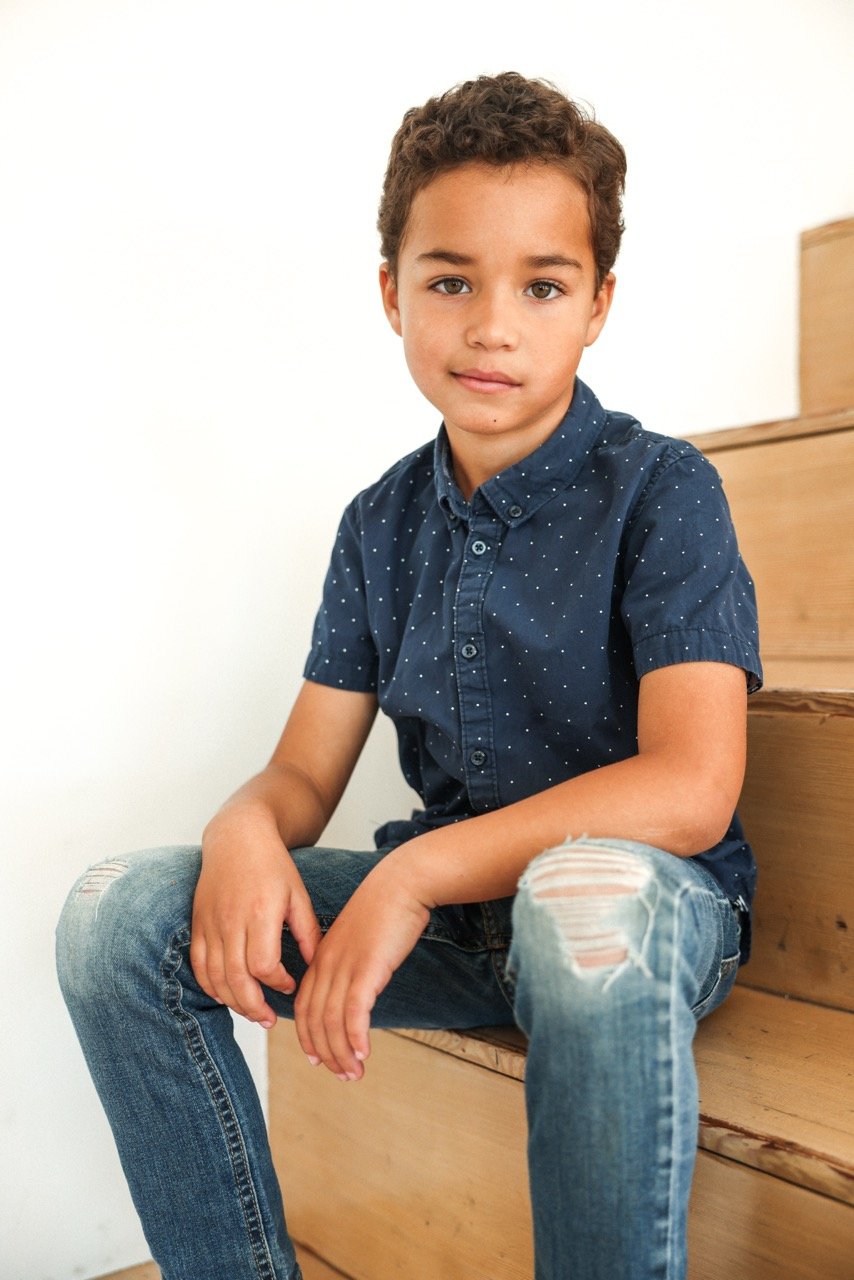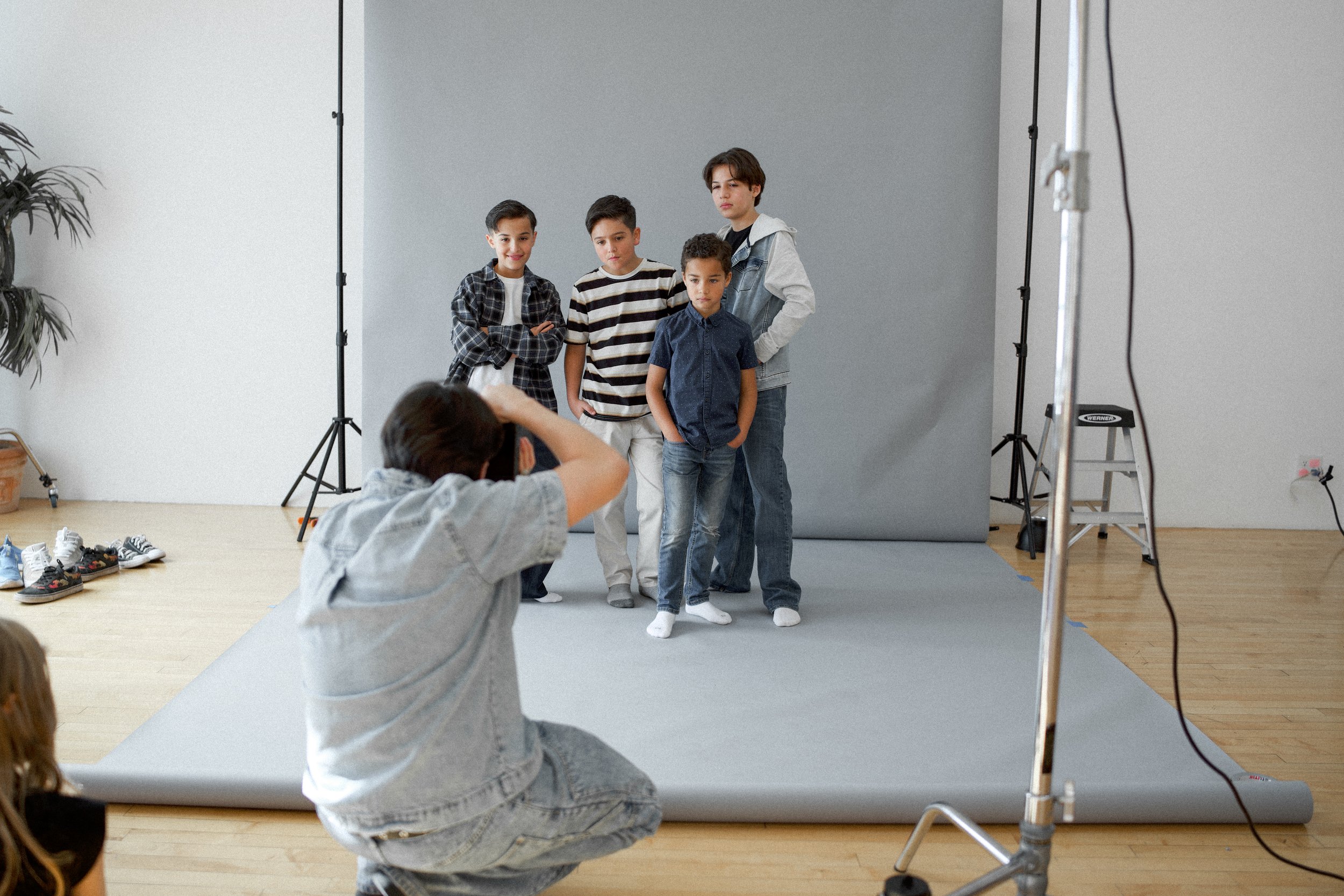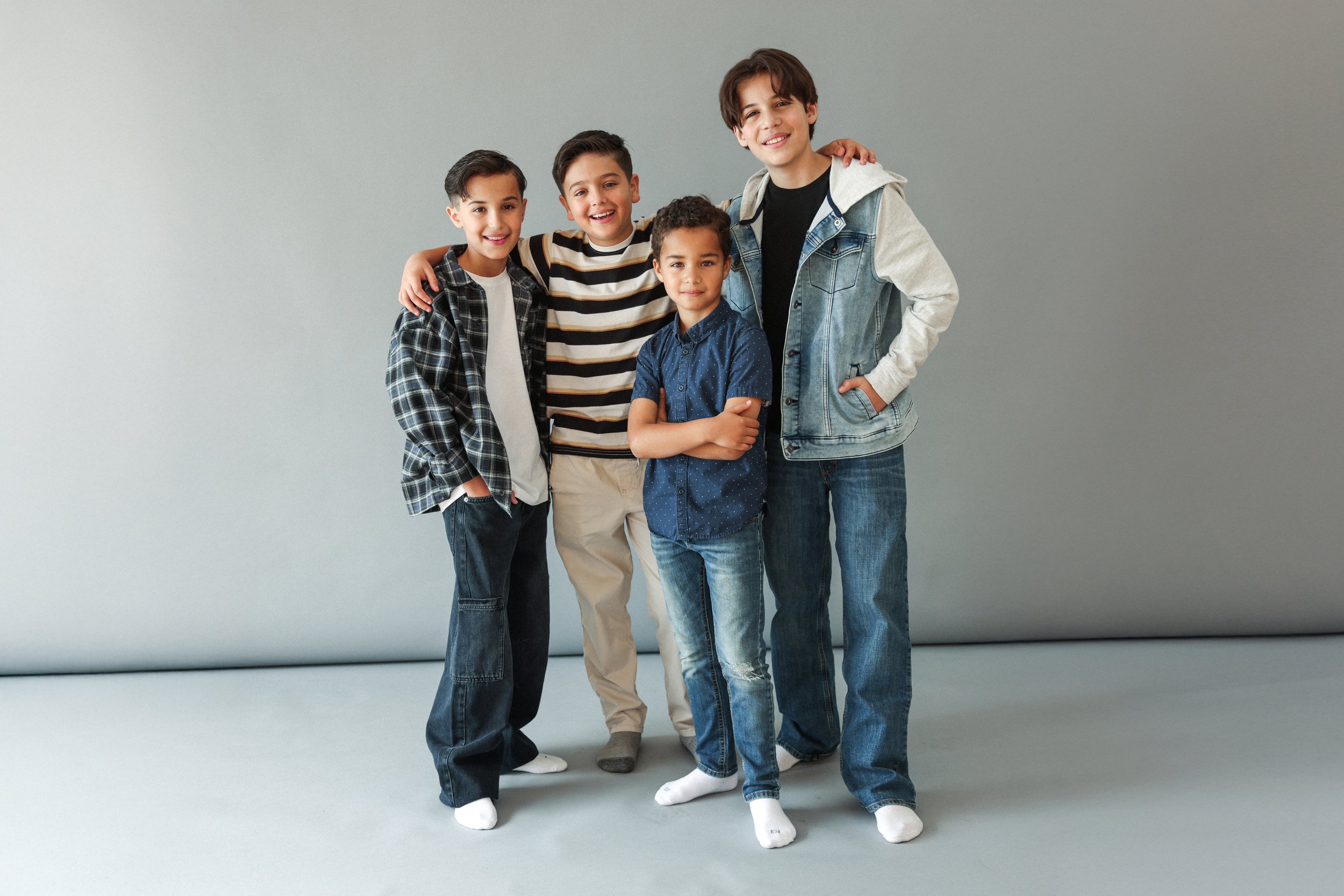What Do Parents Need to Know About Child Modeling?
If you're thinking about child modeling for your little one, there are several significant factors to take into account. The industry can be competitive and demanding, so evaluating your child's readiness is essential. You'll need to explore different types of opportunities, from commercial print to social media collaborations. Finding a reputable agency is vital, as some may charge upfront fees.
Understanding these aspects will help you make informed decisions as you steer through this experience. What comes next?
Key Takeaways
Child modeling includes opportunities in print, TV, editorial, social media, and runway, each requiring different skills and attributes.
Legitimate agencies do not charge upfront fees and typically take a percentage of the child's earnings instead.
Assess your child's temperament, cooperation, and interest to ensure modeling is a fun and engaging experience for them.
Earnings in child modeling can range from $25,000 to $45,000 annually, with individual job payments varying widely.
Research agencies thoroughly to find reputable ones, ensuring they have a strong network and positive reviews from other parents.
Understanding the Child Modeling Industry
Understanding the child modeling industry can feel overwhelming at first, but breaking it down makes it easier. The industry includes various types of modeling, such as commercial print, TV, and social media, each with unique requirements.
When considering child modeling, researching legitimate model agencies is essential. Remember, reputable agencies don't charge upfront fees or demand expensive classes; they earn a percentage of your child's earnings.
Earnings for child models can vary, typically ranging from $25,000 to $45,000 annually, with individual job payments fluctuating widely. Agencies often look for outgoing and confident children who can follow direction.
Staying adaptable to trends and being prepared for last-minute job opportunities will improve your child's experience in this competitive field.
Assessing Your Child's Readiness
How can you determine if your child is ready for modeling? Evaluating readiness involves several key factors:
Temperament: Is your child calm, sociable, and comfortable around new faces?
Cooperation: Can they follow directions and work well with adults?
Enjoyment: Does your child find the modeling process fun and engaging?
Interest: Are they enthusiastic about the idea of modeling?
These traits can greatly influence your child's success in the modeling world.
It's essential to guarantee that they feel excited about the experience rather than overwhelmed.
Types of Child Modeling Opportunities
When exploring child modeling opportunities, you'll find various categories that cater to different skills and interests.
Child models can engage in commercial print modeling, where they appear in magazines and catalogs, or TV modeling, which includes roles in commercials and shows.
Editorial modeling focuses on high-fashion photo shoots, emphasizing unique looks and strong presence.
Social media modeling is growing in popularity, allowing kids to collaborate with brands for sponsored content.
Finally, runway modeling features children in fashion shows.
Keep in mind that height and age can affect eligibility for specific opportunities. For the best experience, consider these factors and apply modeling tips that suit your child's strengths and personality, such as appearance and grooming essentials that contribute to a professional look.
Turn your child’s dreams into reality! 🌟
Enroll them in the Youth Model Camp and open the door to confidence, skills, and professional opportunities.
Finding Reputable Modeling Agencies
Finding a reputable modeling agency can feel challenging, but it's crucial for your child's success in the industry.
To help you steer through model searches, consider these key points:
Research agencies through social media and read parent reviews on platforms like Google and Yelp.
Verify that they don't require upfront fees or expensive modeling classes.
Look for agencies with a strong network and a history of success.
Confirm they provide clear submission guidelines and communicate well about casting processes.
Ensure the agency offers essential legal protection in contract negotiations to safeguard your child's interests.
Preparing Your Child for Photo Shoots
After securing a reputable modeling agency, the next step is preparing your child for photo shoots. Make sure your baby or young children are familiar with the outfits planned for the shoot, as this can improve their comfort and confidence.
Practice simple poses and expressions with them beforehand, helping them feel relaxed and natural in front of the camera. Emphasize the importance of listening to directions from photographers and crew members, as cooperation is essential.
Keep a positive attitude and encourage your child to have fun; enjoyment leads to more engaging photos. Finally, arrive early to allow your child to acclimate to the environment, reducing stress before the shoot begins.
Safety and Comfort During Modeling Sessions
Ensuring your child's safety and comfort during modeling sessions is crucial for a positive experience. Keep these key points in mind:
Supervise your child constantly and child-proof the environment.
Monitor temperature and lighting for a comfortable atmosphere.
Always keep your child within sight; never leave them unattended.
Bring familiar items like toys or books to help them feel secure.
Managing Expectations and Communication
While crossing the world of child modeling, it's important to communicate openly with your child about their feelings and expectations.
Managing expectations is essential, as rejection is common in the industry. Help your child understand that this isn't a reflection of their worth, but rather a part of the process. Encourage them to learn from these experiences to build resilience.
Additionally, keep an eye on their schedule to prevent burnout, ensuring modeling commitments don't interfere with education or personal time.
Prioritize your child's enjoyment of the modeling experience, as a positive attitude will foster a sustained interest.
Financial Aspects of Child Modeling
Understanding the financial aspects of child modeling is crucial for parents looking to navigate this industry effectively. Here are some key points to take into account:
Average annual earnings range from $25,000 to $45,000.
Payment per job can vary, often between $100 and several thousand dollars.
Legitimate modeling agencies typically don't charge signing fees or require expensive classes; they take a percentage of earnings instead.
Baby models earn around $25 to $75 per hour, depending on the project.
Being informed about these financial aspects helps you set realistic expectations and negotiate contracts effectively.
Always research modeling agencies thoroughly to avoid scams and guarantee your child's safety and comfort in this competitive environment.
What Do Parents Need to Know About Child Modeling
Steering through the child modeling industry requires careful consideration and preparation. Assess your child's interest and temperament, seek reputable agencies, and prioritize their safety and comfort during shoots.
Understand the types of opportunities available and manage expectations regarding earnings and experiences. By staying informed and proactive, you can help guarantee a positive modeling experience for your child while protecting their well-being throughout the process.




